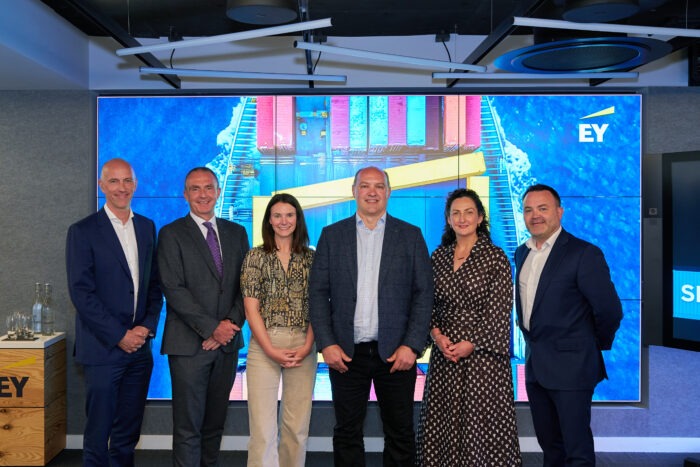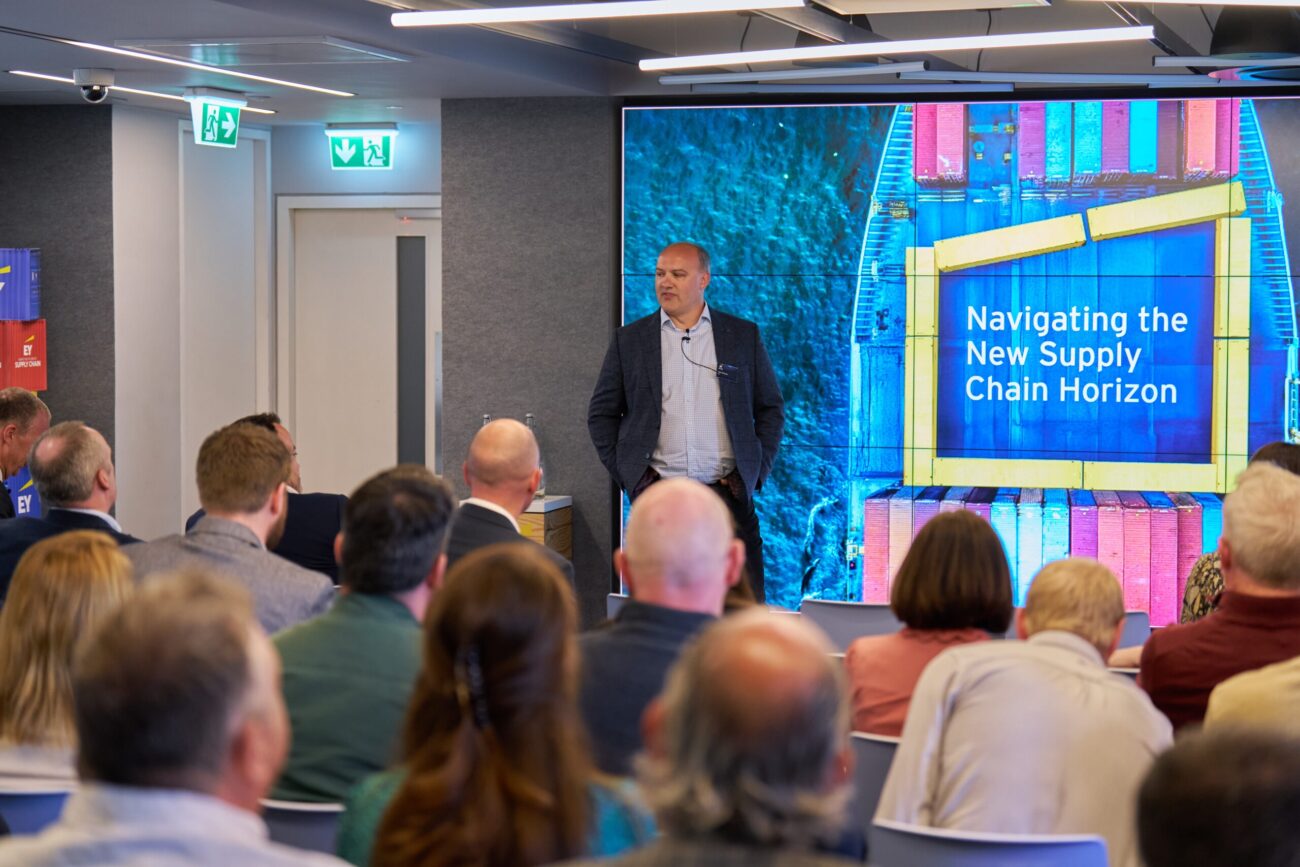Tariffs are the topic that you can’t get away from at present and one that is causing unease for any exporting business that’s trying to figure out the new and ever-changing landscape for trade.
Supply chain managers and experts recently gathered at an event held by EY to take the pulse of the world’s supply chains that have been rocked by tariffs, trade wars and soaring costs.
There’s a new normal emerging, where tariffs at some level are expected to be standard into the medium term, according to Brad Newman, global supply chain and operations leader at EY.
“We believe we’re looking at a new era of globalisation. This is a shift that really started to happen a few years back,” Newman said.
“We’re moving from an era that was really dominated by what we call a unipolar system, characterised by a lot of geopolitical cooperation and a focus on economics, to one that is much more of a multipolar system and is characterised more by conflict than co-operation.”
This is reflected in how people in the industry feel on the ground. Answering a poll for attendees at the event, supply chain professionals cited geopolitical unease, efficiency of tech like AI, and costs and procurement as their most pressing issues.
Diagnosing the problem is one thing, but how do companies review and manage their supply chains in this constantly moving environment?
“Speed and agility”
US medtech giant Teleflex is a company with front-row seats to the various supply chain hurdles that have emerged over the last several years.
James Winters is corporate vice president of manufacturing and supply chain at Teleflex and oversees the supply chain elements of Teleflex’s Irish base in Athlone with its 400-strong workforce.
The Athlone base is the central nervous system for the entire global supply chain at Teleflex, a medical device company. It produces 23,000 products, has 80,000 customers and approximately $3 billion in revenue, feeding into a complicated supply chain to manage.
Companies like Teleflex have been through the wringer in the last number of years when it comes to managing supply chains. Covid-19 disrupted the world order while wars in Ukraine and the Middle East further upended supply chain routes for companies, including the threat of piracy on the Red Sea. On top of all that, inflation has sent costs rising.

But it’s by coming through those headwinds that Winters believes Teleflex is well positioned to respond to the chaotic changes with tariffs and trade.
“It’s speed and agility. That’s our competitive advantage from a Teleflex supply chain perspective,” he said.
Prior to Covid-19, not as many people paid attention to supply chain. But with the pandemic and the series of disruptions that came in its wake and now the threat of tariffs, supply chain experts are, as one speaker put it, now the most popular people at a cocktail party.
Meanwhile companies are juggling sustainability commitments and changing employee expectations.
For all the uncertainty caused by President Trump’s on-again-off-again tariff policy, the broad contours have been understood for a while.
From last year, Winters said, companies could see which way the wind was blowing and that was trade tensions, potential tariffs and increasing protectionism in some form or other.
“We can guess, but it’s our response to what’s happening in the market [that matters]. It’s what’s going to give you and your company a competitive advantage in the future.”
The most important thing, he said, is that companies cannot remain static or hope to ride out the turbulence in their current state. Companies, and specifically their supply chain managers, must adapt and try to pre-empt what comes next.
“When the US elections happened, most people talked about what was going to happen with tariffs and so on. The second that announcement happened, we geared up manufacturing for our key product lines that we were selling into China,” Winters said. “We strategically built incremental inventory on key product lines.
“In April, when President Trump stood up in the Rose Garden, we were actually on a conference call waiting for his announcement as he was announcing, we were booking air freight to move all the product.”
This involved moving more products into China, a major market for Teleflex, to mitigate short-term impact from the tit-for-tat tariffs between the US and China.
All the while, the company has been investing increasingly in greater automation, digital analytics and AI, including developing a digital twin of its supply chains, to react more quickly to changes and disruptions as they happen.
New normal
In the short and medium term, tariffs are expected to be the new normal. The US has struck a deal with the UK and talks are ongoing with China, while the EU and the US have commenced negotiations. Whatever the outcome, the general consensus for many is that some form of tariffs will be in place one way or the other. The question is, how high will they be?
Many expect that there will be some baseline of at least 10 per cent tariffs in effect for the foreseeable future for goods entering and exiting the US.
But tariffs are just one cog in the machine of a broader geopolitical discussion that companies are grappling with.
“Obviously the most pertinent conversation is around tariffs and that’s the first thing, but it’s broader than tariffs. It’s just one component. The three big trends are populist policies, wars and the geopolitical rivalries,” Aidan Meagher, who co-leads EY’s new geopolitical unit, said.
“They all have a big impact on how companies should think about their supply chain, so it’s multifaceted,” he said.
It is no longer strictly a supply chain problem but a problem for the company as a whole. It is evidenced by how Teleflex has responded in recent years by aligning targets for supply chain personnel in the company with other divisions to create what Winters terms “one Teleflex”.
Aoife Murray, transfer pricing partner at EY Ireland, said companies should use the current environment as a chance to examine many arms of their business, such as transfer pricing.
“Transfer pricing has become a more popular topic in the last while and transfer pricing really looks at how multinationals price goods and services between themselves. But really what it’s trying to do is allocate taxing rights between countries, who gets to tax what and where,” she said.
“In terms of what we’re seeing clients looking at the moment, it’s around modelling out what they have, what they can do, it’s around working with their colleagues in supply chain, in their global trade teams and then looking at their transfer pricing policies more broadly.”
For clients that Murray is working with, that involves mapping out the physical flows of goods and it speaks to the need for more communication between supply chain teams and tax teams.
“I was surprised how many transfer pricing people did not understand that [supply chain side] and vice versa,” she said. “Transfer pricing really focuses on the legal flow, so conversely, we wanted our supply chain colleagues to understand how do goods flow from a tax and legal perspective and who is getting the profits related to those?”
Linking these strands up is important to effectively reduce the dutiable price that’s going into a jurisdiction and, from a transfer pricing perspective, to potentially reduce those tariffs.
“You don’t want to impact your taxable profits in that jurisdiction, so is there a way to unpick the price that you are selling into a jurisdiction? So, potentially splitting that between the cost of a good and some kind of other flow, be that royalty for exclusive distribution rights in that jurisdiction or whatever that is, but really essentially trying to reduce that dutiable price and have some other flow going into that jurisdiction.”
As companies adapt to the new normal, there’s an opportunity for companies to review and optimise their transfer pricing, she said.
Tech literacy
Managing all of these challenges means new tech. Bronagh Riordan is an AI and data partner at EY Ireland and oversees the firm’s AI, data and analytics strategies.
Supply chain operations generate substantial amounts of data about goods, where they’re going, the route they navigate, and the costs involved. Industries have gradually grasped the benefits of data analytics, but the proliferation of AI is ushering in even more change in how data is utilised and it creates another challenge for businesses that are trying to keep up.
Coming from a retail background, Riordan said that the challenges of the last few years have highlighted how powerful data analytics and AI can be in managing those issues.
For supply chain managers, the leading innovation afoot is digital twins, which are effectively digital replicas of the entire supply chain that can be mapped and managed as one.
“Digital twins are an excellent way to look at scenario testing and get a clear picture of end-to-end supply chain visibility. One of the key goals that I have seen as well is that every organisation needs to look at the full end-to-end and that’s not always available,” she said.
“When you look at it from a data perspective, you need to have all your data in one place.”
This means ensuring all data is accurate, complete, up to date and well governed. “You want to make real-time, informed decisions on accurate quality data.”
Quality data is vital to building out effective tools for things like demand forecasting and real-time visibility.
These are the types of tools that Teleflex has invested in, deploying GPS tracking on all containers, not just to track a container’s whereabouts but to monitor congestion at ports.
This type of real-time visibility is vital so businesses can “act quickly, efficiently, effectively,” Riordan said.
But tech is only as good as the people using it, she added, and companies need to invest in AI literacy for their teams.
“It’s really important to ensure that your organisation is educated and upskilled when it comes to AI literacy as well, so that you know how to use the technology,” she said.
This is key in the shifting dynamics of the supply chain. Another common theme emerging from the talks was that companies are unlikely to be able to rely on just one supplier anymore.
That means more and more suppliers and complexity to manage, to get the best price and reduce waste, and deploying the right tech tools and the skilled-up teams to manage it all to stay ahead of the next challenge coming down the road.
For additional information on Supply Chain Solutions, visit here.
This article has been produced in association with EY Ireland.


